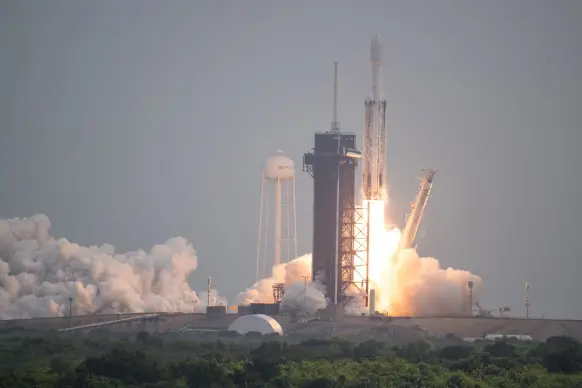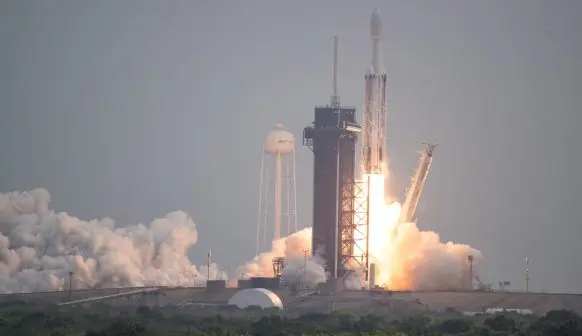
Written by staff writer.
NASA’s Deep Space Network complex outside Canberra played an important role in the launch of the Psyche spacecraft on the weekend. It was where NASA established the two-way communication link with the spacecraft around 90 minutes after its launch.
A Falcon Heavy rocket launched from the Kennedy Space Center at 10.19 a.m. on Friday, October 13 (1.19 a.m. on Saturday, AEDST), carrying the Psyche spacecraft into orbit. The launch was significant for several reasons, including it being NASA’s first mission to study an asteroid that has more metal than rock or ice, and it being the first in a series of NASA science missions to be the primary payloads launched on a SpaceX Falcon Heavy rocket.
Adverse weather delayed the launch by 24 hours. However, when it did happen, all went as planned. Around one hour after launch, the spacecraft separated from the rocket. The rocket was operating its seventh mission. Both side boosters had worked the USSF-44, USSF-67, and Hughes JUPTER 3 missions.
“The SpaceX rocket has demonstrated its ability to withstand the extreme conditions of launch,” a NASA social media posting said shortly after separation. The spacecraft will now travel about 2.2 billion miles to study the metal-rich Psyche asteroid. The asteroid’s gravity will capture the spacecraft in late July 2029, and it will begin its prime mission in August. The van-sized spacecraft will spend about two years orbiting the asteroid to take pictures, map the surface, and collect data to determine Psyche’s composition.
“By studying asteroid Psyche, we hope better to understand our universe and our place in it,” said Nicola Fox, associate administrator at NASA’s Science Mission Directorate. Scientists believe the asteroid, which is about 280 kilometres at its widest point, could be part or all of the iron-rich core of a planetesimal, a building block of a rocky planet.
Alternatively, NASA says it could also be the leftover piece of a completely different kind of iron-rich body that formed from metal-rich material somewhere in the solar system. They believe Pysche is a survivor of multiple violent hit-and-run collisions, frequent when the solar system was developing.
The Deep Space Communication Complex outside Canberra used its Deep Space Station 34 (DSS-34) and Deep Space State 35 (DSS-34) satellites to establish the communication link. Personnel inside the complex were able to acquire the spacecraft’s signal, receive telemetry, uplink, and track it before eventually handing over the role to the Deep Space Communication Complex outside Madrid, Spain.
The mission continues NASA’s interest in asteroids. The agency recently successfully collected a capsule of soil from asteroid Bennu. After collecting the sample, the OSIRIS-Rex spacecraft buzzed Earth last month, sending the capsule down, before continuing on a new mission to explore asteroid Apophis. Like the Psyche mission, these missions were about gathering hard data to understand our origins better.
The Psyche spacecraft uses ion propulsion, specifically, four SPT-140 engines, which are Hall-effect thrusters using solar electric propulsion. Onboard the spacecraft is an array of scientific instruments, including a magnetometer, a gamma-ray and neutron spectrometer, and a multispectral imager. Psyche orbits the Sun in the outer part of the main asteroid belt between Mars and Jupiter, anywhere from 300 million to 605 million kilometres away. As soon as Pysche spots its namesake asteroid, it will start sending images and data back to NASA.
Image: NASA/Aubrey Gemignani.






